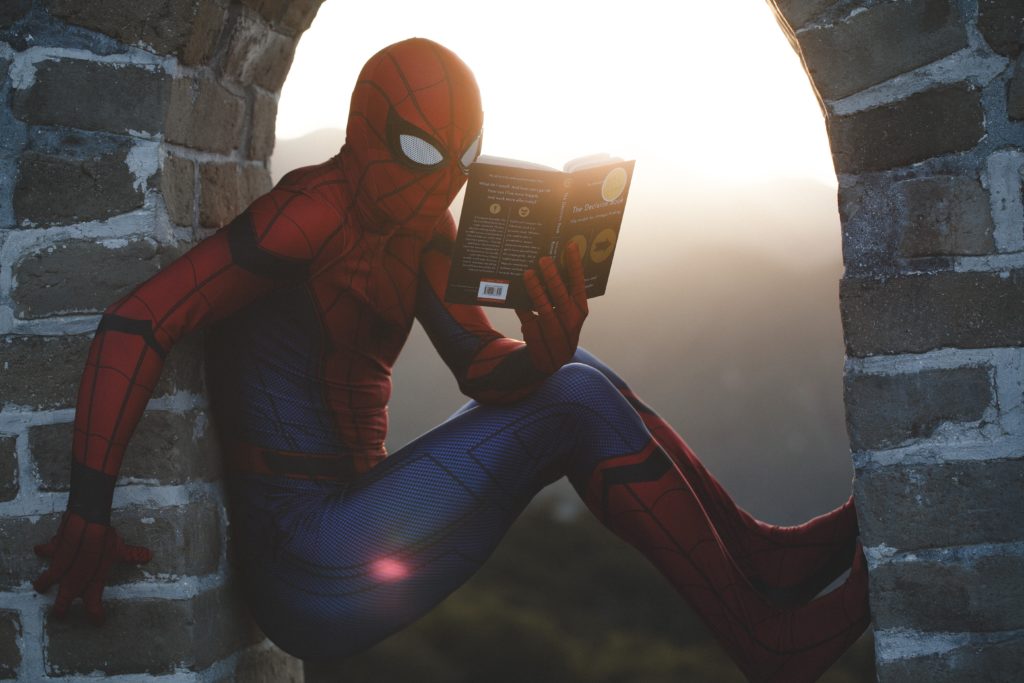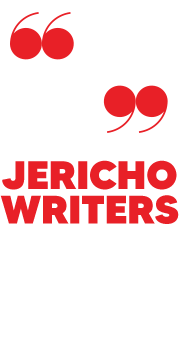When it comes to creative writing, the protagonist and antagonist characters are often the main focus and essential in telling the story. These are the characters with depth and complexity, the ones that move a story on, the ones we champion or that we want to see defeated. The conflict between the two is age-old – it creates tension, action and consequence, and, if done correctly, brings great satisfaction to the conclusion of a story. So how do we define a protagonist and an antagonist? How do we write them?
What Is A Protagonist?
A protagonist is a character who, in most situations, a reader will be rooting for. This character differs from other main characters because they are the ones that drive a story forward with their decisions and actions, and their goals reflect the goals of the story. Consider Lord of the Rings for example.The goal of the trilogy is good triumphing evil, and its protagonist, the big-hearted Hobbit Frodo, has the goal of destroying the ring and thus destroying Sauron who embodies evil.
In most cases, a reader follows the protagonist throughout the story, however sometimes we see the protagonist through the eyes of someone else – a supporting character or through a third person narrator. Consider the famous play Blood Brothers by Willy Russell. The narrator is an enormous part but isn’t the protagonist – the audience care only about the two brothers, Eddie and Mickey.
Types Of Protagonists
There are three types of protagonist:
- Hero
The classic good, morally upstanding, saves-the-cat-on-the-way-to-save-the-world kind of character. The hero will have flaws, but readers will have a fair inkling about who’s going to come out on top in this conflict from the word go. Think Harry Potter, Scout from To Kill A Mocking Bird, Luke Skywalker from Star Wars. - Anti-Hero
A deviation from the classic hero, often a reluctant or ill-equipped character who needs to navigate a situation thrust upon them. These characters may not be classic heroes, and they might also have some major flaws, yet they still evoke empathy and affection. Think Scarlett O’Hara in Gone in with the Wind who, although spoilt and hotheaded, survives through wily means even when her glamorous southern belle life falls apart. Other examples are Becky Sharp from Vanity Fair, and Lyra from His Dark Materials - Villain
Yes, you can still have a villain as a protagonist because a villain can still lead and decide the events of the plot. Think Jordan Belfort in The Wolf of Wall Street, Villanelle from Killing Eve, Grinch in The Grinch (who, OK, turns out good but man, in the beginning he’s downright mean).
Keep in mind when writing a protagonist that they need to be relatable. Your reader needs to care about what happens to them. If they’re not flawed in any way, they won’t feel real and therefore the reader won’t care what happens to them. If they’re too powerful, the reader will assume they can overcome anything and therefore the story will become boring – Superman maybe a classic hero but thanks to Kryptonite he still has one weakness. Yet, if they’re too weak, the reader will feel annoyed at the character’s lack of gumption and won’t root for them. And if they’re too nasty, they won’t feel like a protagonist. No one will want to see if they make it to the end of the book.

What Is An Antagonist?
An antagonist is a character working against the protagonist who, in most cases, the reader wants to see foiled. The antagonist creates the conflict and is generally seen as the ‘bad’ one but, like the protagonists, there are different types of antagonists.
Types of Antagonists
There are four types of antagonists:
- The villain
This antagonist example is all about the evil-doing and often just for the sake of being evil (how liberating to be so horrible!). They live for the destruction of the protagonist and as such, they are mostly found in fantasy and sci-fi writing where the primary goal is ‘good triumphing evil’. Classic villains are The Emperor and Darth Vader in Star Wars, Voldemort in Harry Potter, the shark from Jaws (who still torments me to this day, so well done Peter Benchley for ruining swimming pools for me). - The conflict-creator
These antagonists are not necessarily a bad character. They are still very much human and have their own fears, hopes and dreams, but their goals work in conflict with the protagonist’s. They may also inspire the protagonist to act against their better judgment. Examples of a conflict-creator are Severus Snape in Harry Potter, Buzz Lightyear in Toy Story, or Willy Wonka in Charlie And The Chocolate Factory (he’s not an out and out bad guy, but he doesn’t make things easy for the children).
Sometimes the antagonist in a story isn’t even a person. Let’s take a look at the inanimate forces that may challenge your hero… - Nature
The antagonist in the Tom Hanks film, Castaway, is the relentless sea who won’t let him leave the island. The antagonist in Bethany Clift’s The Last One At The Party is the deadly virus that sweeps the world and leaves one woman pitted against the odds to survive a post-apocalyptic world. - The supernatural
The Shining is a perfect example of this force working against a protagonist. - Objects
The ominous giant lighthouse in Emma Stonex’s The Lamplighters causes three men to disappear. It’s the perfect, atmospheric, antagonist. - The protagonist themselves
This internal conflict, for me, is the most satisfying antagonist, and which also brings the most rewarding conclusion to a story. A character starting a story at A, overcoming a flaw within themselves, and arriving up at B is my absolute favourite thing. The old man in Disney’s Up is a great example of this – his antagonist is his own emotions, the grief for the loss of his wife which keeps him anchored in the past and unable to enjoy his life. Nudged by Russell, the boy scout, he discovers the joy and freedom of living again. As the saying goes, it’s often simply ourselves who are standing in the way of where we wish to go.
It’s important to keep in mind that an antagonist must be as three dimensional as the protagonist. Their backstory should be just as important and relevant as that of the protagonist, and consequently their motivation should be something the reader can understand – even if they don’t agree. Voldemorts’ motivation to kill Harry in Harry Potter is because his broken and mutated soul got stuck in seven different places when he tried to kill Harry as a baby, so you know, if that’s not motivation for a demise, what is?! Jaws was simply trying to score a meal.
Making Your Antagonist Unforgettable
Being creative with your antagonist can be a lot of fun and ensures they won’t be forgotten in a hurry. Let’s face it, everyone loves a baddie! They don’t have to be ‘ugly’ or scary or always in hiding, often the most dangerous can be loved by many. Look at giving them redeeming features to make them even more unsettling and unpredictable. Bond villain Blofeld was always cuddling his cat. How can a guy who loves his cat be all that bad? Let your protagonist find out!
The Difference Between A Protagonist And An Antagonist
A protagonist and antagonist are opposites – antonyms. The protagonists are generally the good guys (even it means that sometimes they are antiheroes) while antagonists are generally the bad guys. Look at the protagonists and antagonists in Disney films or in classic children’s fairytales. They are always perfect examples of clear conflict and well-matched foes.
Basically, readers tend to empathise and relate to a protagonist, whereas they won’t necessarily want to with an antagonist. However, they need to understand both these characters. Their friction needs to be relatable, or at least plausible.
If we, as authors, want to hook readers into our stories, we have to make them care. And the only way they are going to care is by relating to our characters and understanding their motivations which drive the decisions they make. It’s important that a writer addresses this for both the protagonist and the antagonist, not just to drive the plot forward but to connect with the readers.
Whichever types of protagonist and antagonists you have in your story, always make sure they are worthy of each other. Opponents need chemistry in order to make a convincing and gratifying conflict. Think Clarice Starling and Hannibal Lecter in Hannibal who are very different characters but matched in an intelligence in which they find a mutual respect. Batman and The Joker are matched perfectly for their abilities to bring out a madness and darkness within each other. Sherlock Holmes and Jim Moriarty are matched in the depth of their intellectual game playing.
Can A Protagonist Also Be An Antagonist?
This is an interesting question with some conflicting points of view. For me, certainly a protagonist can be an antagonist. Villanelle from Killing Eve is the antagonist to Eve (the other protagonist) and slips her grasp constantly. However, the plot of the story is very much dual led. Villanelle is funny, unpredictable and wears outrageous clothing, and we find ourselves charmed by her despite her psychopathic, murderous ways. You can have real fun with this sort of protagonist. The appeal of writing someone who says and does questionable and outrageous things so far out of our normal everyday lives is big (at least it is for me, so I wonder what that says about me?!). As a reader, being thrust directly into the mind of someone villainous can be exciting. Not to mention it makes the baddie hard to forget.
Also, the antagonist of the story can also be inside of the protagonist – such as the old guy from Up battling against his grief. Woody from Toy Story is another great example of the antagonist within the protagonist. He was Andy’s most beloved toy until Buzz Lightyear was bought. His presence had a knock-on effect to the internal conflict within Woody – his insecurities and fear of being replaced meant his ‘good guy’ persona was rattled and he had to work hard throughout the film to overcome it.
Protagonists And Antagonists Make your Story
Establishing a strong understanding of the roles played by antagonists and protagonists is essential for all writers. Develop your protagonist and antagonist alongside each other, keep their goals and motivations clear, keep their conflict electric, keep them real, but above all, ensure you enjoy writing them and your readers will be sure to love reading about them.
Jericho Writers is a global membership group for writers, providing everything you need to get published. Keep up with our news, membership offers, and updates by signing up to our newsletter. For more writing articles, take a look at our blog page.











